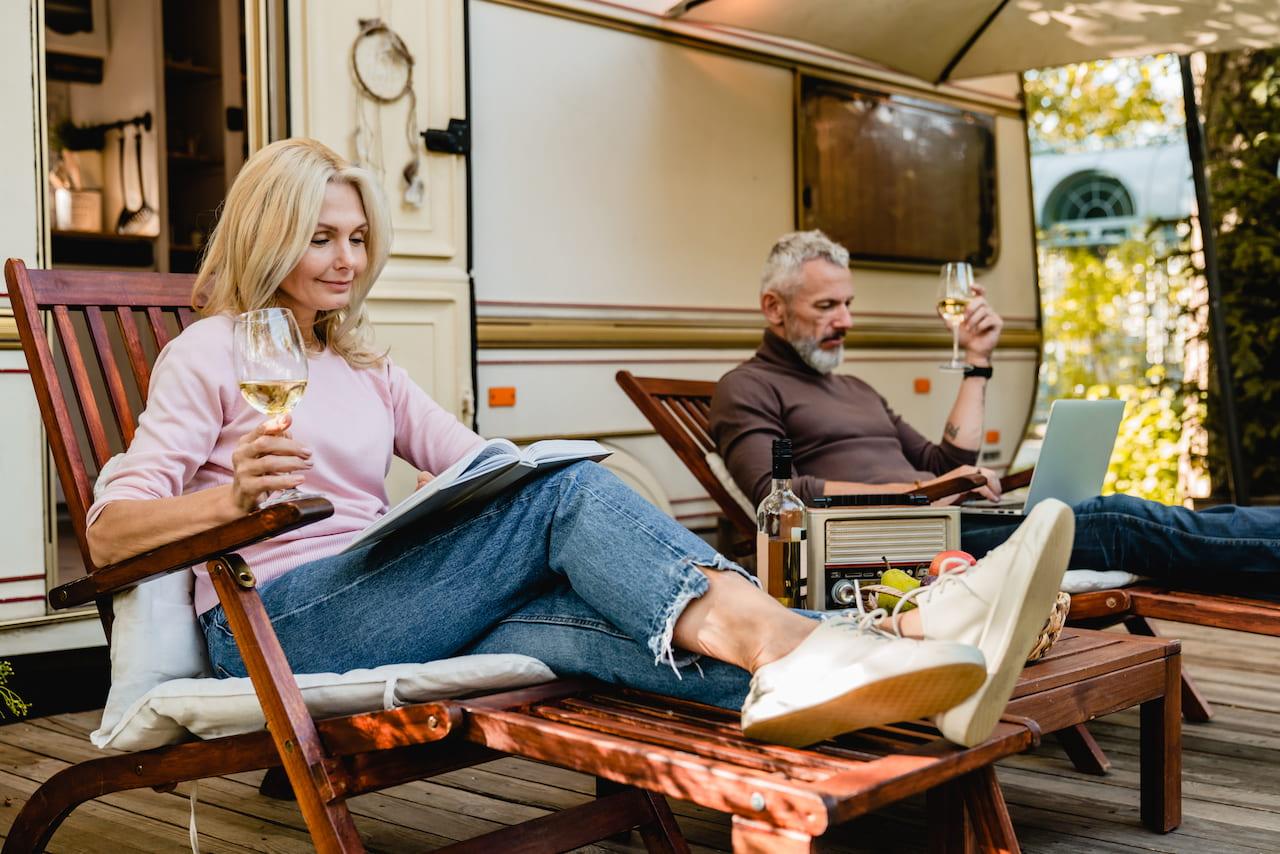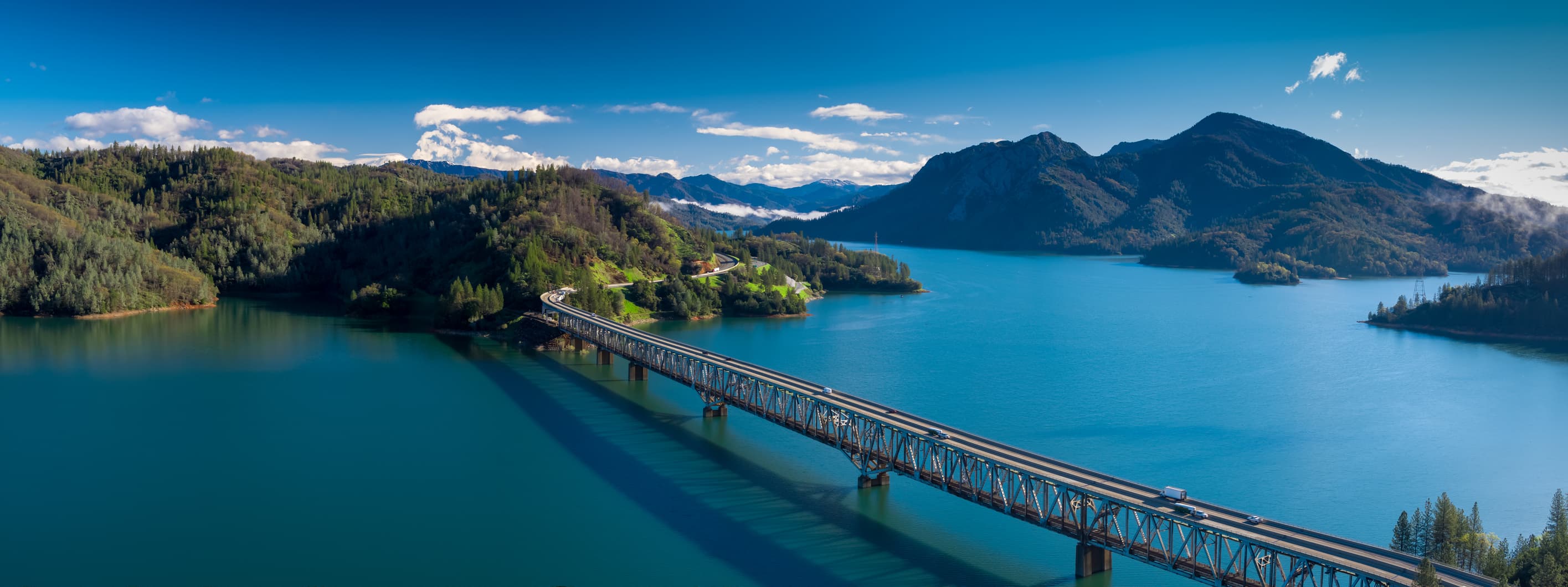Nov 3, 2021
Living in an RV Park Full-Time: Your Complete Guide to Year-Round RV Life
Living in an RV Park Full-Time: Your Complete Guide to Year-Round RV Life
A
By Aaron Ammar
Explore the ins and outs of living full-time in an RV park. This guide covers the benefits, challenges, costs, and tips for making the most of your RV park lifestyle.
Common questions
Blog Post
Education

Living in an RV park full-time is legal in most states but requires understanding park rules, securing proper hookups (30/50-amp electric, water, sewer), and obtaining specialized full-time RV insurance. Key considerations include finding parks that allow year-round residency (many limit stays to 6 months), ensuring reliable internet for remote work, budgeting for utilities and park fees, and upgrading your insurance to include emergency expense coverage, HOA liability, and personal property protection—standard RV policies don't cover full-time living risks.
Can You Legally Live in an RV Park Full-Time?
Most states allow full-time RV park living, but local zoning laws and individual park policies determine residency rules—always verify both before committing.
Here's the straight talk: you absolutely can live full-time in an RV park in most places, but the devil's in the details. We've walked first-timers through this process hundreds of times, and the biggest mistakes happen when people assume "legal" means "no restrictions."
State-by-State Reality Check:
- RV-Friendly States: Florida, Texas, Arizona, Montana, and South Dakota have some of the most relaxed laws for full-time RV living
- Restrictive Areas: California prohibits RV living as a primary residence in many localities, and Minnesota limits stays to 180 days in some counties
- Middle Ground: Most states allow it with proper permits and compliance with local zoning
The Real Hurdles:
- Park policies: Many RV parks limit stays to 6 months to avoid becoming "mobile home parks."
- Zoning restrictions: Local governments may prohibit year-round residency
- HOA rules: Some RV communities have specific residency requirements
Don't get caught off-guard by insurance requirements either. Understanding full-time RV insurance early in your planning prevents claim denials later.
Industry Growth Context: According to the RV Industry Association's latest economic impact study, the RV industry generates $140 billion annually and supports nearly 680,000 jobs—with a notable shift toward younger owners (median age now 32) who increasingly work remotely while RVing.
What Hookups and Amenities Do You Need for Year-Round Living?
Full-time RV living requires 30 or 50-amp electrical service, reliable water with adequate pressure, sewer connections, and increasingly crucial: high-speed internet for remote work.
After helping thousands of full-timers get set up, here's what actually matters:
Essential Hookups:
- Electrical: 30-amp provides 3,600 watts (suitable for smaller RVs), while 50-amp delivers 12,000 watts for larger rigs with multiple AC units
- Water: City water connection with a pressure regulator (prevents pipe damage from varying pressures)
- Sewer: Direct connection eliminates frequent dump station trips, essential for comfortable full-time living
Internet Reality: Remote workers need reliable internet, not the "Wi-Fi available" that barely loads email. Look for parks with fiber connections or plan for your own cellular setup with signal boosters.
Climate Considerations:
- Heating/Cooling: 50-amp service lets you run multiple AC units and high-BTU electric heaters simultaneously
- Insulation: Park models and well-insulated RVs handle temperature extremes better
- Backup Plans: Generator restrictions vary—some parks prohibit them entirely
Pro Tip: Visit potential parks during your least favorite season. That gorgeous summer park might be a wind tunnel in winter.
Extended Stay Programs: Major chains like KOA offer structured extended stay programs with full hookups specifically designed for long-term RV residents, including stays longer than 28 days.
How Do You Choose the Right RV Park for Long-Term Living?
Research park policies on stay limits, evaluate community amenities, and visit during the off-season to assess year-round viability before committing to any long-term agreements.
We've seen too many people fall in love with a park in perfect weather, only to discover the reality when the seasons change. Here's how to choose smart:
Essential Questions for Park Management:
- Stay limits: Can you actually stay year-round, or is there a mandatory "break" period?
- Utilities: Are electric, water, and sewer included in the monthly rate?
- Internet: What speeds are actually available (not just "offered")?
- Community rules: Pet policies, visitor restrictions, quiet hours
Location Factors:
- Medical access: Critical for retirees—how far to hospitals and specialists?
- Shopping/services: Grocery stores, banks, and postal services within a reasonable distance
- Transportation: Public transit or need for personal vehicle
Community Vibe: Visit during both peak and off-season. Some parks are ghost towns in winter, others become overcrowded during peak months. Talk to current residents—they'll tell you what management won't.
Budget Reality Check: Monthly rates vary from $300-1,500+, depending on location and amenities. Factor in electricity costs (often separate), internet fees, and any required insurance or deposits.
What's Different About Full-Time RV Insurance vs. Standard Policies?
Full-time RV insurance includes homeowner-like protections such as emergency expense coverage, HOA liability, and higher personal property limits—standard RV policies exclude these critical coverages.
This is where we see the most expensive mistakes. Standard RV insurance assumes you have a house to go home to. Full-time policies recognize your RV is home.
Key Full-Timer Coverage Additions:
Emergency Expense Coverage: Pays for temporary lodging if your RV becomes uninhabitable—crucial since you don't have another home to return to
HOA/Loss Assessment: Reimburses fees charged by RV park associations for repairs to common areas, up to policy limits
Higher Personal Property Limits: Your RV contains your entire life, not just vacation gear. Full-timer policies reflect this reality.
Extended Personal Liability: Covers injuries that occur in or around your parked RV, similar to homeowner's liability coverage
Medical Payments: Covers medical expenses for visitors injured in your RV, regardless of fault
Adjacent Structures: Covers standalone structures on your RV site like sheds, decks, or carports
The Cost Reality: Full-time RV insurance typically ranges from $1,000-$4,000 annually, depending on RV type and coverage levels. It's more expensive than standard RV insurance but far less than the potential costs if you're underinsured.
Critical: Many insurers require you to declare full-time status upfront. Trying to file a full-timer claim on a standard policy often results in claim denial.
What Are the Real Costs of Living in an RV Park Full-Time?
Budget $800-2,000+ monthly for park fees, utilities, and insurance, plus initial setup costs for proper equipment and potential RV modifications for year-round comfort.
Let's break down what full-timers actually spend, based on real data from our customers:
Monthly Recurring Costs:
- Park fees: $400-1,200 (varies dramatically by location and amenities)
- Electricity: $50-300 (often separate from park fees)
- Internet: $50-150 (cellular backup plus park Wi-Fi)
- Insurance: $80-350 monthly for full-timer coverage
- Propane: $30-100 (heating, hot water, cooking)
Setup and Equipment Costs:
- Surge protectors: $200-500 (essential for electrical safety)
- Water pressure regulators: $25-75
- Quality hose and sewer equipment: $150-300
- Internet boosters/antennas: $300-1,000
- Climate control improvements: $500-3,000
State-Specific Considerations:
- Residency requirements: Some states require a physical address for voting, licenses
- Taxes: Florida allows RV domicile establishment, Texas has no state income tax—research state-specific RV insurance requirements early in your planning
- Mail forwarding services: $150-300 annually
Hidden Costs:
- Seasonal rate increases: Many parks charge more during peak seasons
- Utility deposits: Some parks require deposits for electric service
- Pet fees: Additional monthly charges if you have furry companions
Ready to make the leap to full-time RV living? Get your full-timer RV insurance quote and protect your new lifestyle with coverage built for life on the road.
Cellular internet with signal boosters provides the most reliable connection for remote work. Many full-timers use multiple carriers and unlimited plans as backup. Park Wi-Fi is often inadequate for work-from-home needs.
Absolutely, but success depends on reliable internet and a suitable workspace. Many RV parks now cater to digital nomads with dedicated work areas and fiber internet. Plan your locations around connectivity needs.
Yes, standard RV insurance excludes many full-time living scenarios. Filing a claim while living full-time without proper coverage often results in claim denial, leaving you responsible for all costs.
Underestimating insurance needs and choosing the wrong coverage type. Standard RV policies don't cover full-time living risks, leading to expensive claim denials when emergencies happen.
Stay limits vary by park policy and local regulations. Many California RV parks limit stays to six months before requiring a break in residency, while others allow year-round living. Always verify both park rules and local zoning laws.
Roamly Insurance Group, LLC ("Roamly") is a licensed general agent for affiliated and non-affiliated insurance companies. Roamly is licensed as an agency in all states in which products are offered. Roamly license numbers. Availability and qualification for coverage, terms, rates, and discounts may vary by jurisdiction. We do not in any way imply that the materials on the site or products are available in jurisdictions in which we are not licensed to do business or that we are soliciting business in any such jurisdiction. Coverage under your insurance policy is subject to the terms and conditions of that policy and is ultimately the decision of the buyer.
Policies provided by Roamly are underwritten by Spinnaker Insurance Company, Progressive Insurance Company, Safeco Insurance Company, Foremost Insurance Company, National General Insurance, Mobilitas Insurance Company, and others.
Connect
© 2025 Roamly All rights reserved.
